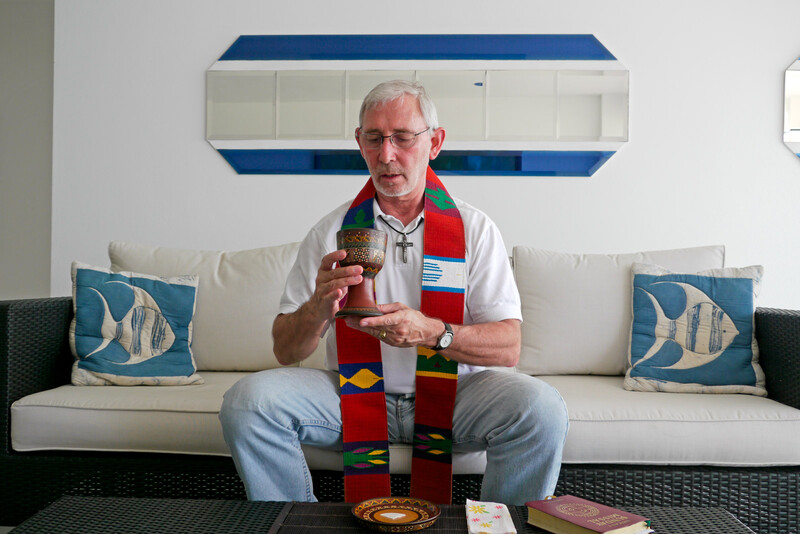It’s probably a stretch to say that Jodi Kantor ’96CC was “called” to her profession. But her story does sound just a bit like a spiritual summoning. One morning in the fall of 1998, she woke up and knew with absolute certainty that she needed to drop out of law school and become a journalist. She calls it “the only epiphany I’ve ever had in my life.”A little over four years later, at the age of 27, she was named Arts & Leisure editor of the New York Times. Good call.
And now, after two and a half years that proved transformative both for Kantor and for the paper, she has decided to try her hand at full-time writing. On August 1, she stepped down as Arts & Leisure editor and joined the paper’s “The Way We Live Now” team as a reporter — a versatile veteran at age 30.
In retrospect, she admits, all the signs of her eventual vocation were there from the start. A native New Yorker, she grew up reading the Times obsessively and by high school was a walking billboard for it. She sported an oversize Times sweatshirt and a button on her backpack that said “Have you read your New York Times today?” At Columbia, she hung around with aspiring journalists and wrote a column for the Spectator. And during her one semester at Harvard Law School, she spent her study time putting together personal anthologies of her favorite literary journalists. “Instead of doing my legal research,” she says,“I was sitting in the Law School Library saying,‘Who is that guy, Alex Ross? I guess I’ll just Nexis everything he’s ever written and read through it story by story.’
“Once I started doing things like that, I guess I had an inkling that I wanted to be in journalism. It all seems so clear now.Yet it was very confusing at the time.”
Kantor is petite, pretty, and decorous. An abundance of wavy brown hair and an occasional broad smile are the only slightly extravagant things about her. She has a quiet, unassuming voice, and speaks exclusively in well-composed sentences — some of which might sound provocative if they weren’t delivered in such a quiet, unassuming voice. “One of the most important things we do as editors,” she says,“is decide what’s interesting. A lot of journalism is knowing what to ignore.”
Indeed, in her first week on the job, Kantor had to break the news to a Broadway publicist that she was not planning any coverage of Urban Cowboy: The Musical. “He was outraged,” she recalls.“Every Broadway show got a curtain-raiser in A&L. Didn’t I know that was the rule?”
It was the Broadway publicists who didn’t understand. Kantor had come to Arts & Leisure with an unambiguous mandate to make changes and shake things up, and that’s precisely what she proceeded to do. One of the reasons she’s moving on after just a few years, she says, is a sense that many of her goals for the section have been realized. She’s ready for the next professional challenge.
She’s also ready to reclaim some of her day. Kantor and her husband, Ron Lieber, a columnist for the Wall Street Journal, are expecting their first child this winter, and she really wants “a job that doesn’t involve operas that end at midnight.”There was “a certain hamster-wheelish quality,” she admits, to the process of putting out 52 Sunday sections a year, and a certain irony in the fact that her job title contained the word Leisure.
Vital Signs
The one stop on Kantor’s journey from Harvard Square to Times Square was a four-year stint at the online magazine Slate, during which she rose from editorial assistant to culture editor. In the fast, fluid world of cyberjournalism, she developed a reputation for being very smart on very short notice. Within a couple of hours of the second World Trade Center tower’s collapse, she had posted an essay on the site. It was a brief, first-person dispatch from her Brooklyn neighborhood. But it was calmly and sensitively written, and in those shocked early moments was a much-needed vital sign from the city. It concluded with the memorable observation that everyone on the street was making eye contact and no one was saying anything. “I don’t know which is more unusual for New York,” Kantor wrote.
While at Slate, she solicited and edited some work by Times columnist Frank Rich. He liked her style, and the two stayed in touch.When the Times’s newly appointed executive editor,Howell Raines, told Rich he was looking for an editor to reinvigorate Arts & Leisure, Rich called Kantor and asked her to submit a written critique of the paper’s cultural coverage. She did, and that was pretty much the end of the candidate search. “It was one of the fastest hires I’d ever seen,” Rich says. “I think it was partially based on my feelings about her work, partially based on Howell and others examining her work and meeting her and talking with her, and partially based on this kick-ass memo she wrote.”
Kantor is not at liberty to disclose the contents of the kick-ass memo but says that its first sentence, which did leak out and circulate, gives a pretty fair sense of its drift: “The New York Times is serving its readers spinach for dessert.”
The memo revealed Kantor to be a kindred spirit of several editors who were already discussing ways of blowing the dust off the Times’s cultural coverage. Shortly after her arrival at the paper, she joined Rich, Assistant Managing Editor for Features Adam Moss (now editor of New York magazine), and Culture Editor Steve Erlanger (now the Times’s Jerusalem bureau chief), among others, on a committee charged with planning the overhaul. Their recommendations, most of which have since been adopted, included putting a premium on reporting and forming a beat system that would give each subject area, from film to classical music, its own editor, reporters, and critics.
“I just thought the paper’s culture coverage needed to be a lot more aggressive,” she says. “A lot less predictable. A lot more provocative. Reportorially, a lot more sophisticated.The coverage had always been wonderful, but you got the sense that it was something that had been very cutting edge in its day and hadn’t necessarily been brought up to speed with the enormous, crass, teeming world of culture that we have now. The Times has an incredible tradition of covering live performance. Were we doing as well with new forms of entertainment? I didn’t think so.”
It’s telling that the stories Kantor now calls her favorites from her term at Arts & Leisure — an investigation into the use of performance-enhancing drugs by classical musicians, a look at the rise of the big-budget high school musical, a piece on soldier rappers in Iraq — can’t easily be placed in any of arts journalism’s familiar categories, such as the precede or the profile. She opens a back issue of Arts & Leisure and reverse-folds it, revealing a page dominated by a single, colorful painting with little bits of text on either side. Called “Close Read,” it’s a recurring feature Kantor introduced, a minute dissection of a work of art — in this case, a 17th-century watercolor from an exhibition of Hindu religious works. “This is one of the features I’m proudest of,” she said. “It’s something we crafted to hit your newspaper pleasure button.”Thin black lines extend from figures in the painting to corresponding blocks of explanatory text: “Krishna:The blue-hued earthly incarnation of the Hindu god Vishnu, he came to be known as the god of love. He fulfills his job requirement by asking Radha to make love with him.”
“Because of Columbia,” Kantor says,“I know what it’s like to have a piece of art explained to you by somebody who really understands it, the way an art historian does — especially a historical piece like this one that involves all of these religious symbols I would never be able to decode on my own. And I wanted a way of doing that in the paper. It’s also a great way for us to treat exhibitions. We publish reviews, of course, but as far as features go, how great is it to do one piece in extreme detail as sort of a way of approaching the entire show?”
Liberal Arts & Leisure
If there’s such a thing as a contemporary chestnut, this is it: The engineering graduate asks, “How does it work?” The physics degree holder asks, “Why does it work?” The economics graduate asks, “How much does it cost?” And the grad with the degree in liberal arts asks,“Do you want fries with that?”
Pursuing a general education, privileging breadth over depth, is now seen as so hopelessly impractical that it’s become a punch line.Yet it is Kantor, a history major and a product of Columbia’s Core Curriculum, who is enjoying the last laugh. She ascended — it bears repeating — from novice journalist to section editor at America’s paper of record in the same amount of time it took her to earn her bachelor’s degree. And it turned out to be a job for which any more specialized, more “practical” training would have left her unprepared.
“I went through the Core Curriculum thinking, ‘All this knowledge is great to have; it’s immensely helpful. But I’ll never actually use any of this in my professional life,’” she says.“And yet I ended up with a job in which I call upon the Core every day. I mean, thank God for Music Hum. I would be lost in trying to work on classical music stories if it weren’t for that training.And, you know, this is a job in which an editor needs some familiarity with Freud’s theories and with Greek drama. And so, oddly, the Core Curriculum has been really essential preparation.”
Slings, Arrows
Any one-of-a-kind job, of course, is bound to have challenges for which there is no proper preparation. Almost immediately after Kantor arrived at the Times, the Jayson Blair scandal broke, bringing down Raines and Managing Editor Gerald Boyd and leaving the paper with a sudden leadership vacuum. Rich calls it “the most traumatic incident, to my knowledge, in the history of the Times,” and says Kantor handled it as well as anyone he saw.“ And that’s kind of amazing. To come into a job at an institution as big as the Times, and within months of your arrival see the whole institution in meltdown, and still put out your section, not be distracted, keep your equanimity — it’s very hard.And she did that.”
Kantor has had to endure some less profound but more personal trials as well. Before hiring her, Raines had been publicly running down the paper’s cultural coverage in a way Kantor describes as irresponsible.Yet in the newsroom, her lingering association with the former editor has at times been a liability. Early in her tenure, a newspaper staffer was quoted anonymously in the NewYork Post’s gossip column,Page Six, saying Kantor was “in over her head” and “very aloof.”And Kantor’s youth, omnivorousness, and willingness to change the section made her the embodiment of arts journalism’s dumbing down in the eyes of some conservative media critics — despite the fact that she helped engineer an unprecedented expansion of the paper’s cultural coverage.
Some of the attacks were extraordinarily mean-spirited, and more than a few smacked of sexism: “airheaded,” “inarticulate,” “presumably dots that ‘i’ with a smiley face.” She was called “self important” by the New Criterion, which is a bit like being called esoteric by the Journal of Eukaryotic Microbiology, and “young, dumb, and lacking aplomb”by bearded sages of the New York Press.
Kantor’s magnanimity in the face of all this — “I’d been warned that getting reamed by Page Six was actually a ritual of coming to work at the Times,” she told the New York Observer — seems almost too absolute to be true, but Rich insists it is completely genuine. “This stuff she finds amusing,” he says. “It just rolls off her back. Comes with the territory of the Times.”
One public complaint, however, proved too substantive for Kantor to ignore. For many years, her section had included several pages known properly as the “Arts & Leisure Guide” and casually as “the listings” — an exhaustive compendium of the coming week’s events and exhibitions. It was the sort of journalism journalists hate, requiring no creativity, only compilation. But many readers and artists had become quite attached to it, as Kantor found out when she replaced it with a shorter, voicier, and much more selective arts calendar called, simply, “The Guide.” More than 5,000 people signed a petition calling for the return of the listings. “It landed on my desk,” Public Editor Daniel Okrent wrote last November, “with an echoing thump that could have awakened Brooks Atkinson.” He went on to weigh the arguments of both camps — that the listings were cumbersome and dull on the one hand, and that their primary purpose was practical, not aesthetic, on the other — and came down on the side of the petitioners.
The public editor doesn’t set the paper’s policy, but it was clear nonetheless that something needed to be done. Kantor and the other culture editors fashioned an impressive solution, involving expanded listings in the paper’s Friday Weekend Arts sections and a more inclusive Sunday roundup called “The Week Ahead.” Okrent,who in his column had scolded Kantor and then Culture Editor Jonathan Landman for coming off as “defensive” and “condescending,” now acknowledged that he owed them “new adjectives — like ‘responsive’ and ‘deft.’ They did a wonderful job.”
Kantor is magnanimous about all of this, too. A job at the Times, she says, is too public for anyone who requires the unqualified approval of others, and too relentless for anyone who requires perfection of herself. And although she’s “intensely proud” of some of the sections she’s helped produce, and of the fact that they’re now part of the public record, she believes the medium is too ephemeral for anyone whose aim is immortality.
“The Times, sure, has a kind of glamour of its own because it’s the New York Times, but it’s not a place for divas,” she says.“Even when we produce our best work, it’s lining a lot of people’s kitty litter boxes a week later.”
Brand-New Beat
Two of the first three articles Kantor wrote after leaving Arts & Leisure were about pregnancy.One, a 1,600-word feature on the growing number of people who are inviting their friends and extended family to join them in the delivery room, ran on the front page of the Sunday paper. In the other, Kantor looked at the controversial book What to Expect When You’re Expecting,which in its first printing was a sort of “Our Bodies, Ourselves for pregnancy” but over the course of several editions has metamorphosed into a “paranoia-inspiring, worst-case-scenario handbook.”
There may be more such pieces on the way. Kantor didn’t set out to be “the paper’s pregnancy reporter,” and has no intention of making that her beat. But she can’t help it if she keeps spotting stories. Like the 23-year-old student in the Harvard Law Library, she’s a journalist at heart — even when her mind is supposedly on other things.
“The What to Expect idea I got from some pregnancy bulletin boards on the Web,” she says.“I was just sort of idly reading them, late at night, for my own purposes. But I saw how many people just hated, hated that book, and I thought,‘That’s a story.’”


